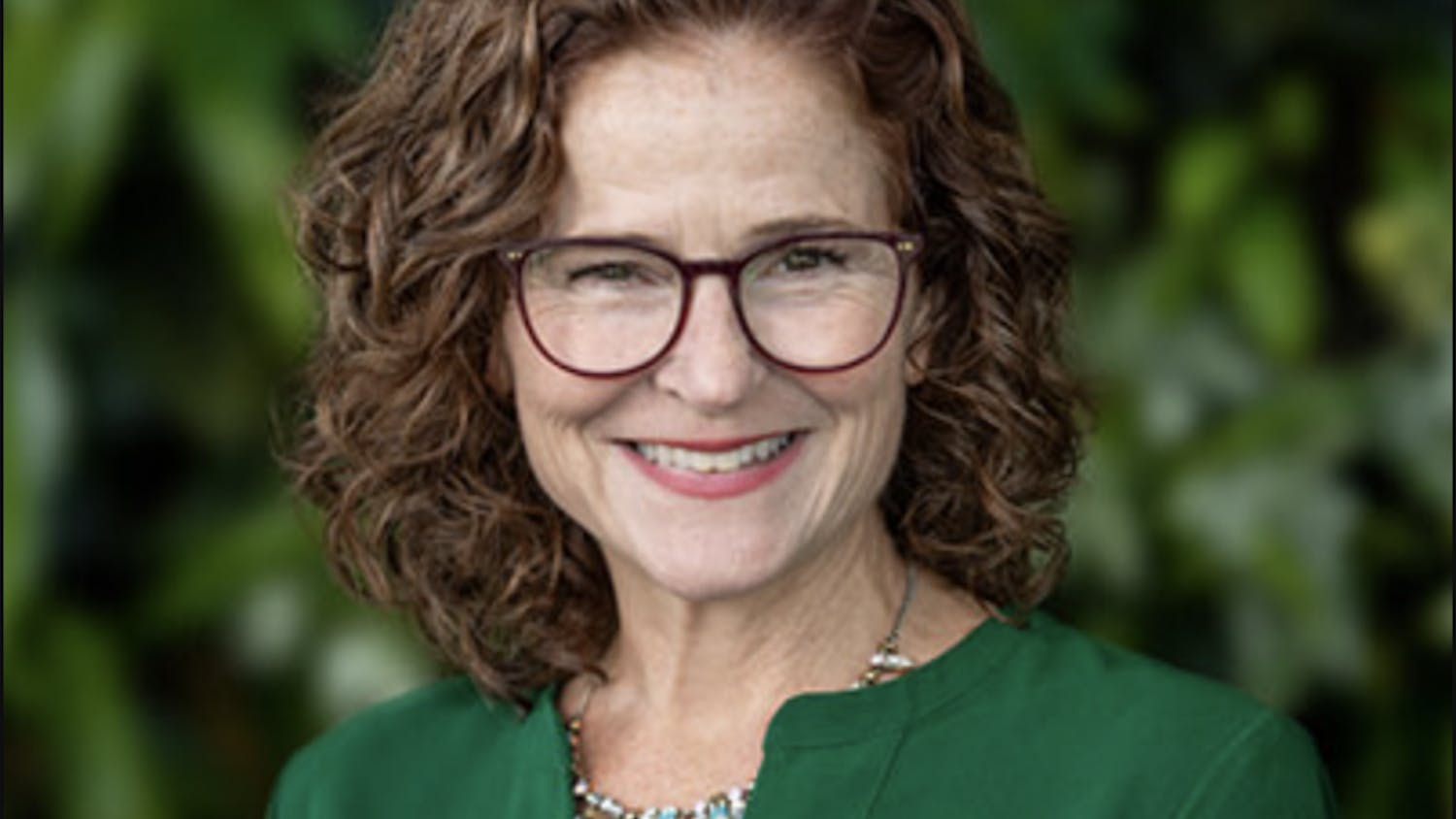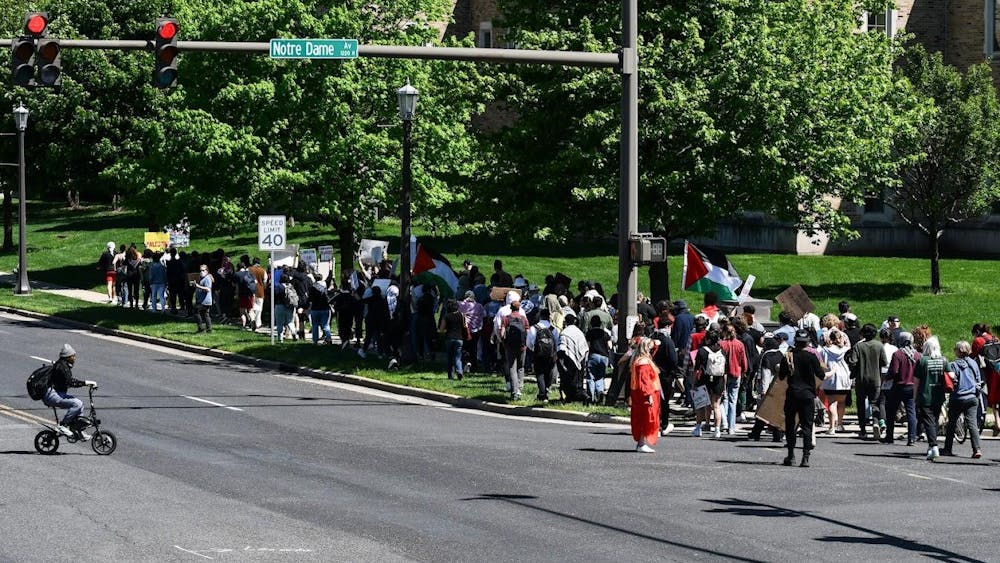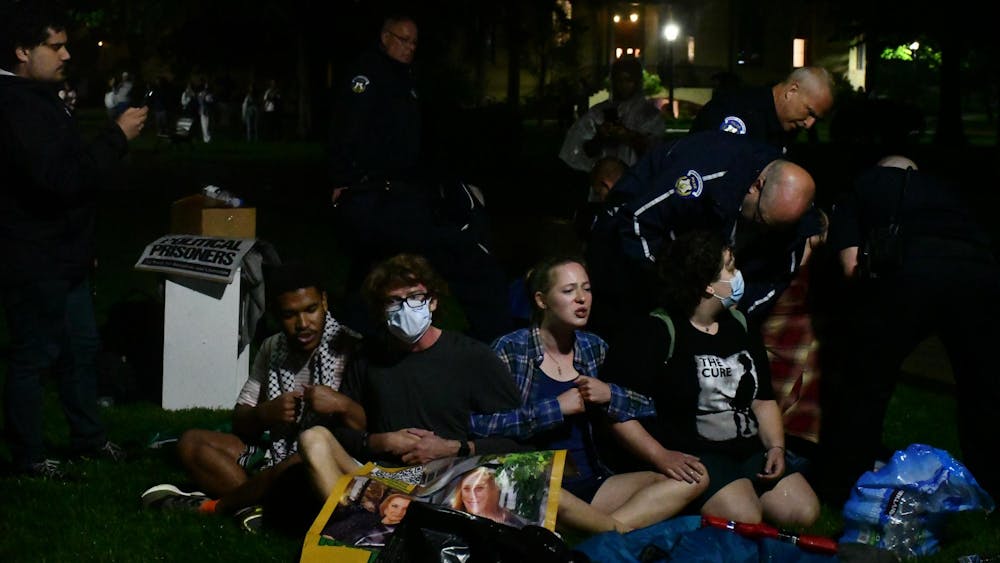“Children are moving; children are on-the-go; children are unsafe in the world. It’s our job — my job — to keep them safe.”
Saint Mary’s alumna and associate director of Save The Children Sarita Fritzler spoke at the College on Tuesday afternoon to talk about her work with the D.C. organization and raised the issue of child protection for refugees at the U.S.-Mexico border as well as the rest of the world.
After graduation, Fritzler joined the Peace Corps and was initially stationed in Zambia. There, Fritzler said her passion for children and child safety grew. After a year, Fritzler said she was moved to South Africa to work with Save the Children.
Fritzler currently works in Texas to aid the large numbers of unaccompanied children and family units who have crossed the southern border into the United States. With the combined effort of Catholic Charities, the American Red Cross and FEMA, Save the Children offers children access to food, water and shelter.
“This sort of crisis, or any crisis, can happen in your own backyard, and it can happen in places like Syria,” Fritzler said. “But it’s happening in our own backyard at this very moment in McAllen, Texas. Children who have left their homes in El Salvador, Honduras and Guatemala are seeking safety above all … they come to the U.S. for asylum.”
According to Fritzler and Save the Children, there are 8.4 million child refugees all over the world. These children have been forced from their homes and are not living in their home country any longer. Further, an additional 16.5 million children are internally displaced, forced within their countries to leave home due to violence, political instability and abuse.
“This includes children in South Sudan, Somalia, Iraq, Syria, here in the United States and in central America, and these numbers go up every year,” Fritzler said. “These are numbers from the end of 2013, so we are not even including the recent immigrant crisis down on the border.
“In June, you probably heard the media reports of large numbers of children coming across the border,” she said. “[This included] 68,000 more children, as young as one all the way up to 15-16 who were crossing by themselves. An additional 68,000 were coming with a parent, so that’s 120,000 since June alone.”
With all of these refugees scattered and separated from their families, Fritzler said the agency works to ensure that children are safe when traveling to the border, when in border patrol custody and when they are reunited with families.
“President Obama declared this a humanitarian crisis at the end of May, but it’s important to note that this is not a new crisis,” she said. “It was declared a crisis because border control was overwhelmed and couldn’t handle the number of refugees they were getting.”
Fritzler said this is not the first time the U.S. government has proved itself incapable of responding to the needs of children in disasters.
“The [U.S.] just has no capacity to respond and help support children. After Hurrican Katrina, it took seven months to reunite a 5-year-old child with their parents when they were separated after the hurricane,” Fritzler said. “We need to do more. We need to be better.”
Save the Children has responded to these needs by setting up child-friendly spaces at the border and in refugee camps. There are spaces specifically designed to support a child’s emotional well-being and recovery, she said.
Compared to the detention sites established by the border patrol, shelters set up by Save the Children provide for those who are in desperate need of support.
“The detention sites are jails — crowded, crowded, cold jails. The women call them the ice cubes, like freezers, because of the cold conditions they keep them in,” she said. “[Save the Children's shelters] provide food, clothing, child-friendly spaces, showers, and then we also give them food and clean-clothes for their travel journeys.”
Trained Save the Children staff and volunteers who know how to support the emotional recovery of the children operate the shelters, Fritzler said.
Beyond facing harsh conditions when detained by border patrol, Fritzler said the people coming across the border are most likely to be fleeing for their lives. Often, refugees as young as six years old have been targeted by gangs.
“If you were in the position as a parent, knowing your child is not safe and knowing you’re risking everything you’ve built up for your family to make sure that your kid can get somewhere that’s safe, you would do the same thing,” she said. “But this is not an immigration talk. These are children. At the end of the day, their basic rights and needs deserve to be met.
“Children are always the innocent ones in this … and there simply aren’t enough people advocating and fighting for the rights of children.”
Such unsafe environments extend to other global crises, where ISIS and other extreme terrorist groups like Boko-Haram or Al-Shabab are threatening the security of thousands of families and children, she said, making humanitarian efforts all the more imperative.
Though the crisis may seem over due to the lack of media coverage, Fritzler insists it is still happening and will continue for years to come.
“The crisis is not over … it’s out of the public, but it’s still happening,” she said. “I was in Texas last week down on the border and the detention centers are full. We see the critical need to be down there, and I think we will be there for a very long time.”
For Saint Mary’s students, this lecture was an awakening to all of the issues that children face on a global scale and all of the humanitarian needs that must be met, senior Cathy Alcantara said.
“Clearly, there’s a large humanitarian issue right in our backyard,” Alcantara said. “I knew about it over the summer because it was in the media a lot, but it hit me more hearing this lecture because it is about children.”
Alcantara said she hopes she can utilize all that her Saint Mary’s education has taught her in the future and service people, like the refugee children, who need help.
“I would like to help my community someday and help the children, even if it is here in the U.S.,” she said. “Right now, my whole focus is business, and I wish I had more experience with women’s studies or something to give back. I will definitely try to do more service work or something to get involved someday like Sarita.”
Fritzler said everyone has a civic duty to help those around them, though this doesn’t mean we all must go to Syria to deliver aid.
“I encourage everyone in college to use their skills — whether it’s in math, science, human services or education, whatever the field of study, to help those around them. That's how we create real change in the world, by applying what we can do best, and helping those around us to do the best they can be,” she said.
“That's the true meaning of humanitarian.”













